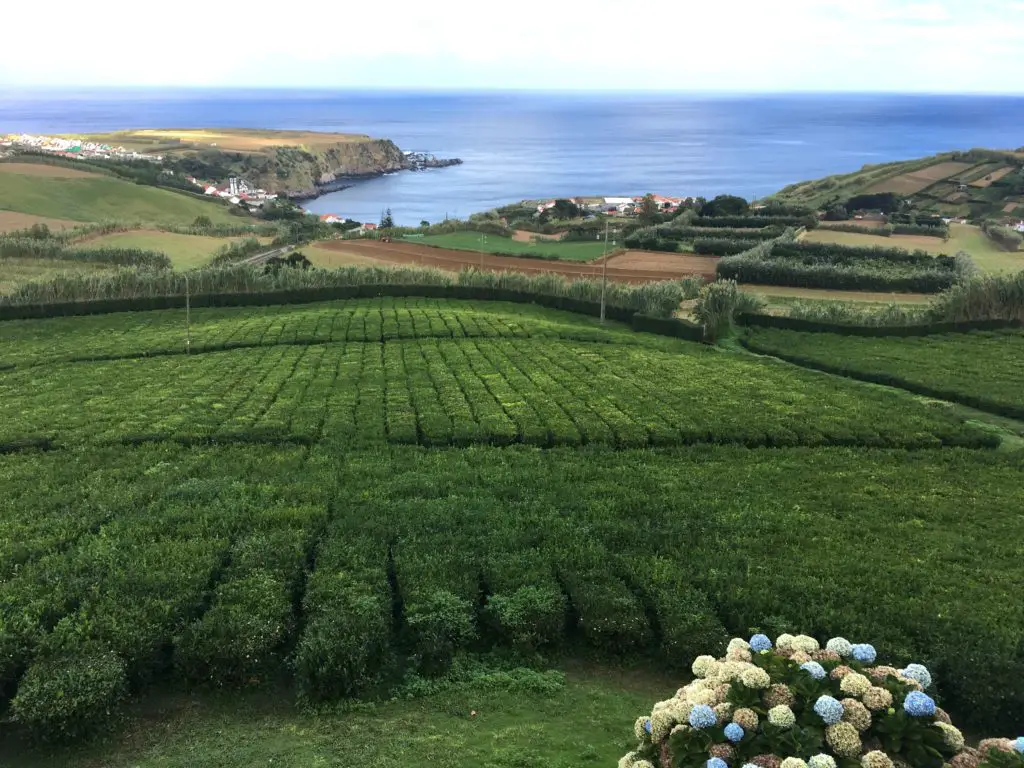This page may contain affiliate links, for which I could earn a small commission. You can review my full disclosure here.
I’ve been on the island of São Miguel in the Azores for a week now. I came here to house and dog sit for friends from Roatan who have made this island their family home. I feel like a broken record since I just keep repeating to them: What an exceptional place to live!
I have a thing for islands. I’m not sure when it started, but I perpetually find myself feeling utterly smitten with island life. The natural beauty, the isolation, the casual pace of life…islands teach me to be a better version of myself.
These places cut off from elsewhere find a similar rhythm with each other – whether tropical or not. I have lived on islands and visited islands and, without fail, they share a reliance on community intertwined perfectly with self-sufficiency.
Location necessitates ingenuity on islands. But that same geographic isolation promotes community growth and support. When all you have is each other, you get awfully familiar very quickly.
Islands have their own particular cadence…and it’s one I absolutely adore.
So it’s no surprise that I instantly fell in love with this island…despite the fact that I flew in just hours before Hurricane Lorenzo was due to hit.
Arrival on São Miguel
Whatever trepidation I felt during the journey was whisked away in the sea breeze as I stood at Miradouro de Santa Iria, a viewpoint looking down the vertical cliff into the Atlantic below.
Other tourists snap photos of themselves and each other. I, too, pull my phone out, unable to resist capturing this moment. It’s become a muscle memory reaction to beautiful places and vistas. I’m no photographer, but I do like the option to press pause and show others the way I see places.

Were it not for the far warmer temperature and much more frequent sea sightings, I might think I was driving around Scotland.
So many variations of green cover hilly landscape and ravines in between. It’s not unlike the beautiful highlands.
Roundabouts abound here, just like back in Scotland. The difference between the new main roads and the old roads is stark – just like turning onto single-track lanes in rural Scotland.
Cows dot the hillsides; dogs’ barking bounces between the hills and out to sea. Random remaining hydrangeas line the road, still vibrantly blue while their neighbors fade away into winter.
It certainly doesn’t feel like winter yet. It’s a delightfully perfect 74*F/23*C.
The sun isn’t beating down like in the Caribbean but instead, it somehow envelops this island. It feels like it’s radiating from the very earth while I still see it in the sky, but it isn’t blinding and overpowering.
It’s a comfort here, this Azorean sunshine, like a good friend who makes you smile just by showing up.
Tea Plantations in Europe
After that pause to admire the views, my friend takes me to our next stop, which is Chá Gorreana, one of only two tea plantations in Europe. The other one is just up the hill from my house sit, so I can enjoy a lovely stroll up there with the dog later in the week.
A tea plantation is, it turns out, a stunning location.
The organized hedges of tea leaves with narrow lanes in between are strikingly beautiful, reminding me of well-landscaped gardens found at palaces and castle estates elsewhere.

I’m surprised to note that they don’t waft any sign of their produce. Inside the factory, however, I start to detect that familiar scent I associate with my mom and with my adopted expat home – both enthusiastic tea drinkers.
We wander through the various stages of production inside the factory. There is no formal tour, no fee, no requirement for safety gear or restricted access. There is simply an open door and others milling about, too.
That island vibe is strong here…casual, laidback, unhurried, and worried less with formality than with experience.
We mosey through, pausing to greet the women who are seated at a table picking through the leaves by hand as they chat all day long.
And then we enjoy free samples of both the black and green tea so I can determine which one I’d like to have as a full cup. That full cup is also free.
I learn that black tea is just oxidized green tea. Who knew?
We do opt to pay for homemade ice cream and enjoy an absurdly beautiful view from inside the cafe overlooking some of the neat hedges of tea leaves toward the sea below.
We sip hot tea and savor that creamy cold, a combination that’s somehow helping regulate my body temperature.
Seems that I may have, in fact, acclimated to Scottish weather after all!
A Cão and a Casa
Arriving at the house, I meet my new furry friend for the next three weeks. If you didn’t know, I house and pet sit internationally, which has taken me to Spain, France, Ireland, all around the UK, and now Portugal. I adore this way of travel and highly recommend it to all animal lovers!
My new bestie is overly protective of women and quickly adapts to being my shadow.
He’s a mix of local island breeds, with defensive and herding instincts that show off his working farm dog pedigree.
He also has brilliant recall and just wants to stay close at all times, which mostly means immediately underfoot.

Stepping inside, I actually stop in my tracks and catch my breath for a second.
A full wall of windows reveals a view from high above the coast. We’d driven downhill from the tea plantation, yet the hill continues for quite some distance still.
And – it turns out – this main floor is the top of three, each with various balcony levels all offering similarly stunning views of the village and marina below. Waves tumble against the rocky cliffside beyond.
The terrain is steep, which gives us the benefit of beautiful breezes washing across the valley and straight into the house.
This is also why we close all the shutters and hope this hurricane continues to shift farther west.
As it turns out, we are lucky, enduring just some strong wind and rain for a few hours overnight.
The islands on the western side of this archipelago took a heavier hit, with damage done to marinas and homes.
With nearly 400 miles between the eastern and western isles, the diversity of weather and storms can vary quite dramatically.
But these islands have endured far worse than a Category 2 hurricane over the years.
The Azorean Diaspora
I grew up between Boston and Providence, an area filled with Azorean families. I never knew why nor did I actually meet any in my own suburban town to ask, but their community is prominent in that region.
There are direct flights from both cities to these islands in the middle of the Atlantic Ocean, specifically to offer easier connections for family visits. That’s how big the community – and demand – is in that region.
Now that I’ve stepped foot on just one of these nine islands, I can only imagine the heartache those families felt at needing to leave.
Many Azoreans now opt to study or work overseas, typically in Canada or the US where the community ties are strong. The stories of whose family lives where fill these islands, alongside the sadness of distance and the benefits of financial support.
The history of the diaspora is multi-layered. Some Portuguese fled during political turmoil, especially during the dictatorship that lasted nearly 50 years, ending in 1974.
During that time, young men were also drafted to fight in colonial wars on African soil. Families fled to protect themselves and to avoid conscription.
Earlier waves of emigration were the result of recruitment efforts. Azoreans were specifically sought out for their skills in whale hunting and agriculture, with areas like New England, Hawaii, and Bermuda proactively encouraging migration.
But I’ve also learned that the large Azorean community in my home region of New England was the result of a political push from then-Senator John F. Kennedy.
The Azorean Refugee Act was written into law in 1958, after a massive volcanic eruption on the island of Faial.
The Immigration and Nationality Act of 1965 later allowed more family members to be reunited in the US. And so the diaspora grew ever larger.
Over 1 million people are estimated to be living in the US today, having been born in or descended from the Azores. That is approximately four times the population of these islands.
As an American descendant of Irish immigrants, I feel a keen kinship here.
The Power of Nature
Earthquakes and volcanic eruptions – plus the struggles that ensued after homes and livelihoods were destroyed – have perpetually pushed Azoreans away from home.
These islands are stunning, but their beauty comes at a cost.
The Azores were born of volcanic eruptions, growing over time to claim more space above sea level. Today, we can marvel at the waterfalls and crater lakes left behind.
But we also need to remember the power of nature. Hurricane Lorenzo is offering a tiny reminder, but nothing like the enormous influence of seismic activity.

There seems to be a similarly seismic pull for the Azorean diaspora to return, and the struggle to stay or go affects every generation.
It’s quite common to hear of multiple generations that flip-flopped; great-grandparents emigrated, met, and married in America.
Their child met and married an Azorean during a summer family visit to the home islands. And then their child met and married an American of Azorean descent. And so on…
I am already feeling enraptured by this place. I know I will find it challenging to leave in just a few weeks’ time. Having family ties here would make it nearly impossible for me to choose to leave.
The Azoreans who must make that decision every year have my admiration and respect.
The expat life is not easy, but neither is the repat life. We all choose at some point, but with nature this mesmerizing and a pace of life this sustainable, it must be heartbreaking to have to leave.
There is magic in a place where only a church bell echoing through the valley will tell you it’s time to go home.
Want to learn more?
Article: Azorean Diaspora Can’t Resist the Powerful Pull of Home
News: Azorean Diaspora Council to Reinforce Political and Cultural Ties
Book: The Tenth Island
Stats: Portuguese-Americans
Background: Portuguese Americans
Looking for more?
- Start with My Expat Timeline to see where I’ve lived
- Get all the Scotland expat info here
- And the Roatan expat info here
- See my travel destinations
- Subscribe to my newsletters to stay in touch!

